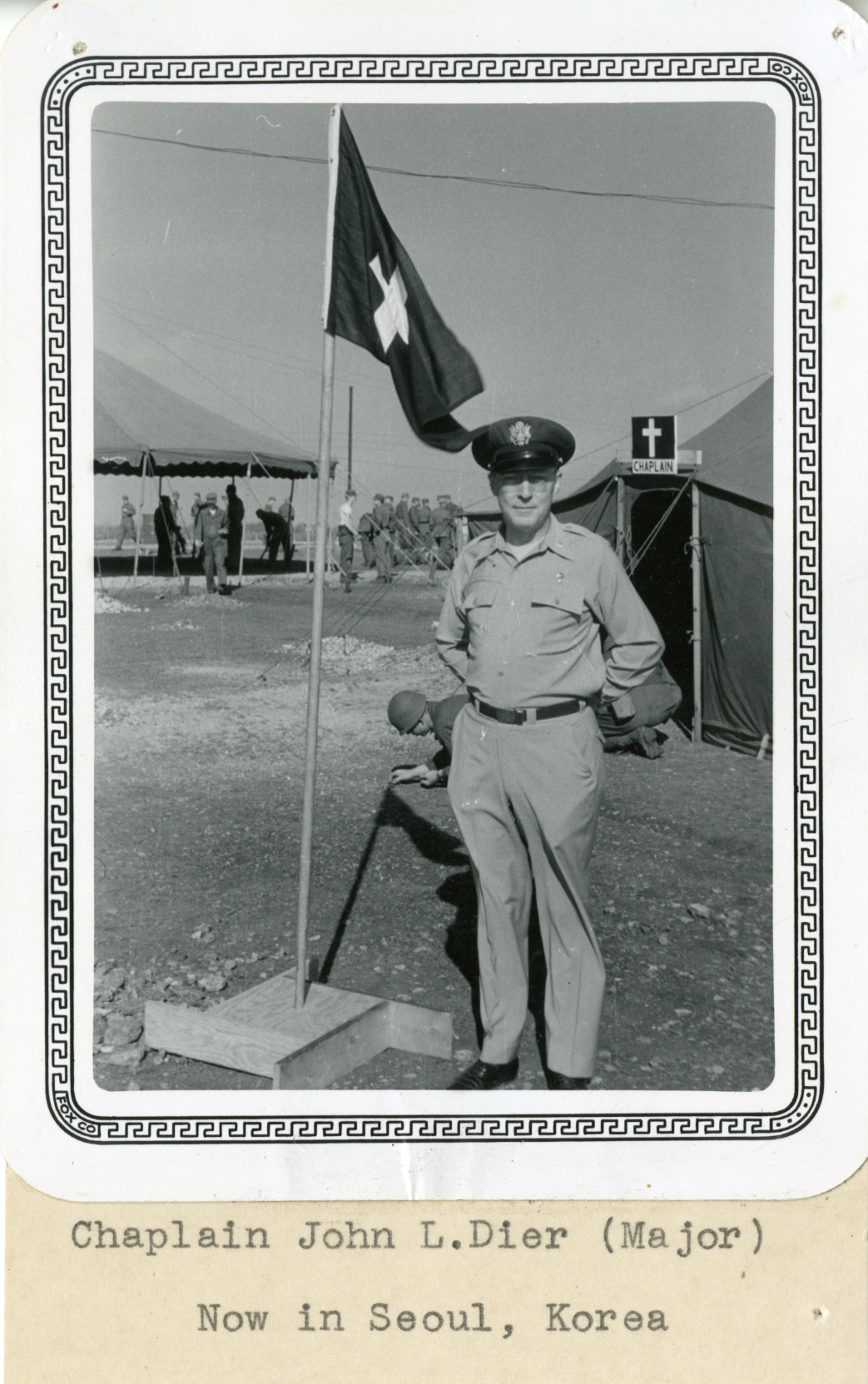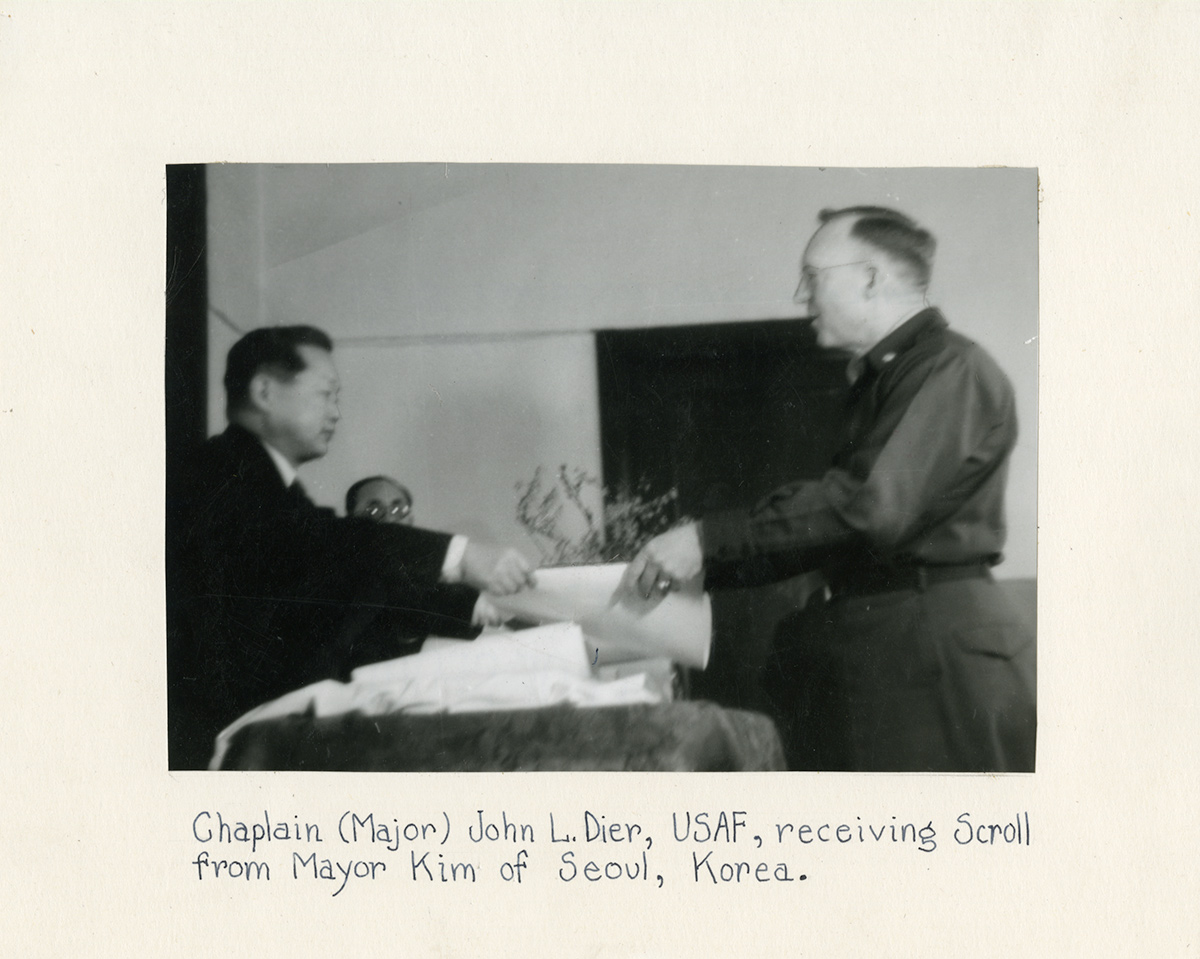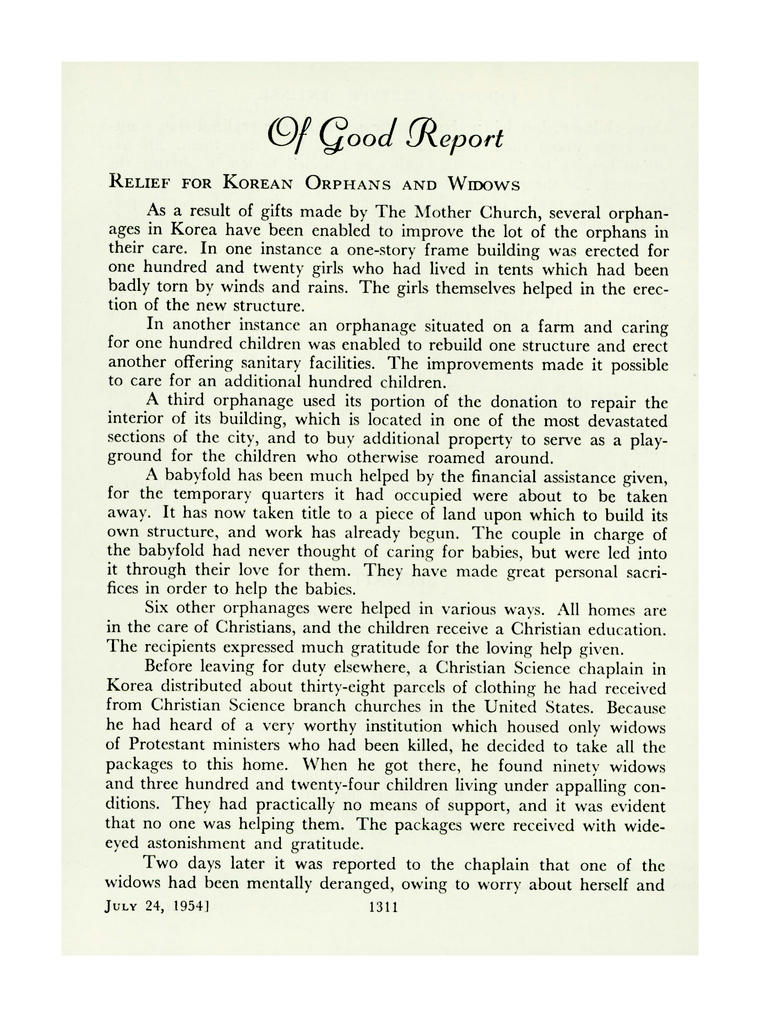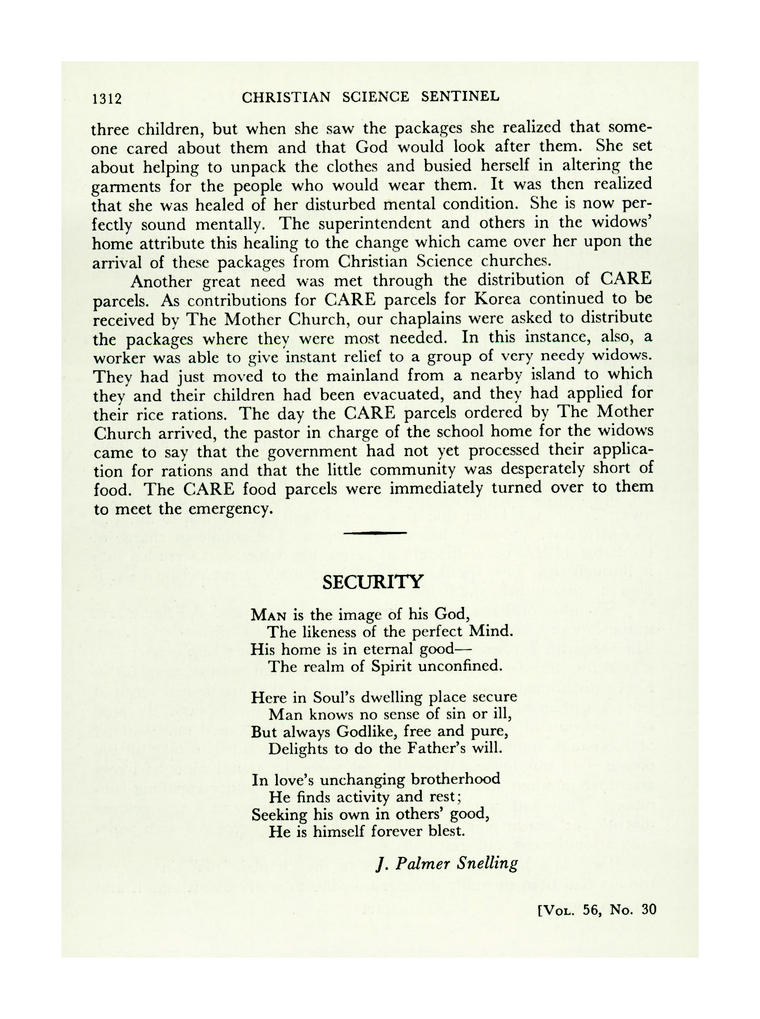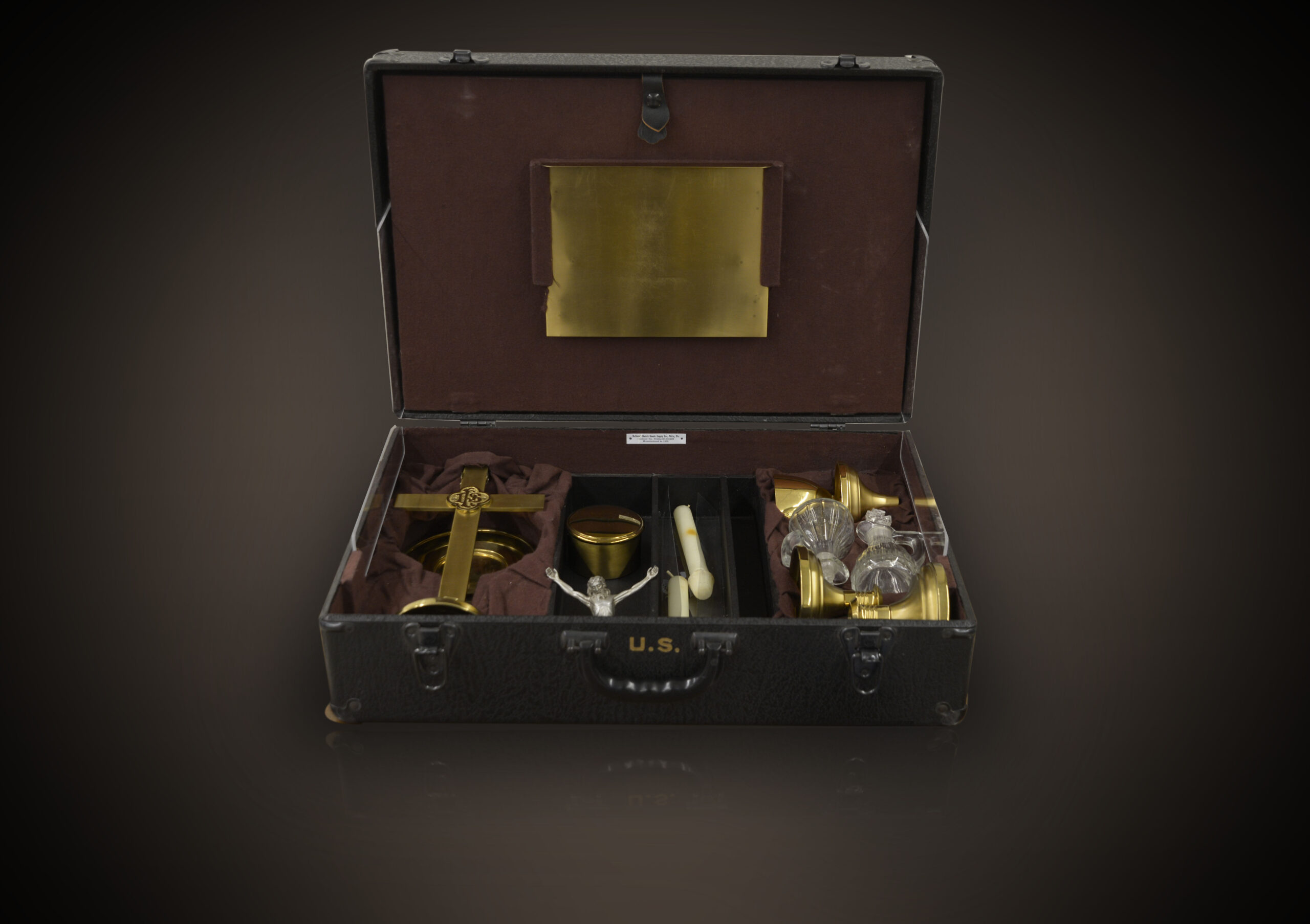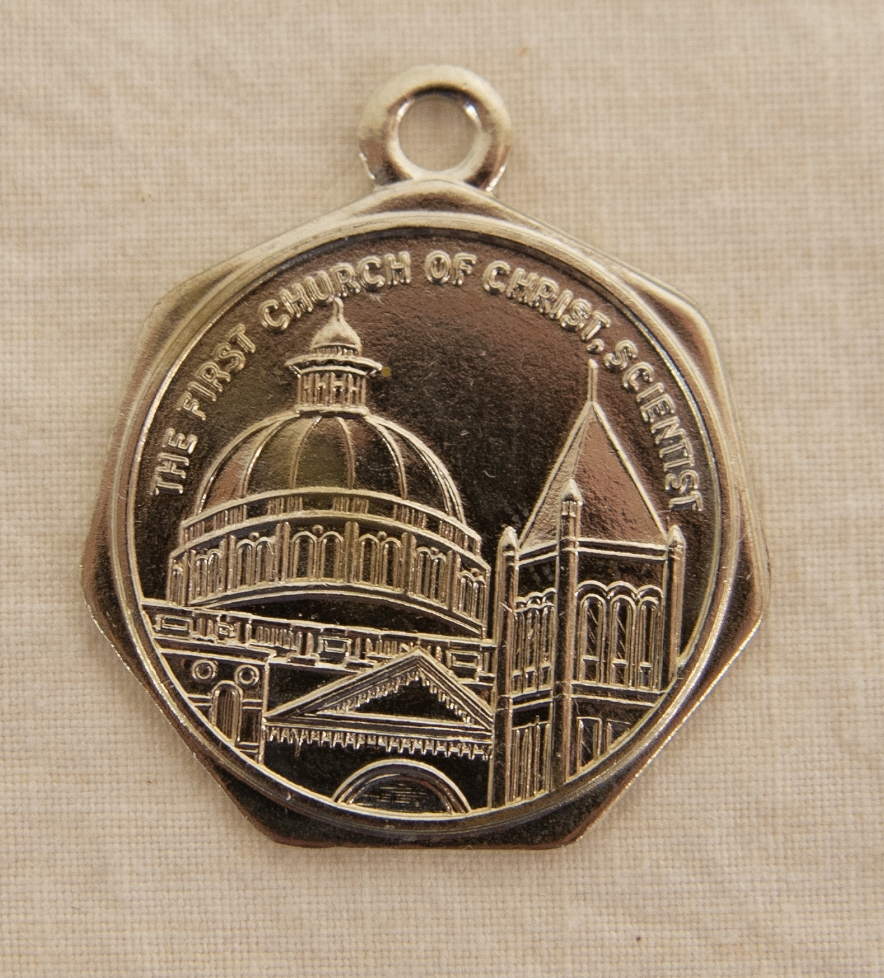
100 Years of Christian Scientists in Military Chaplaincy
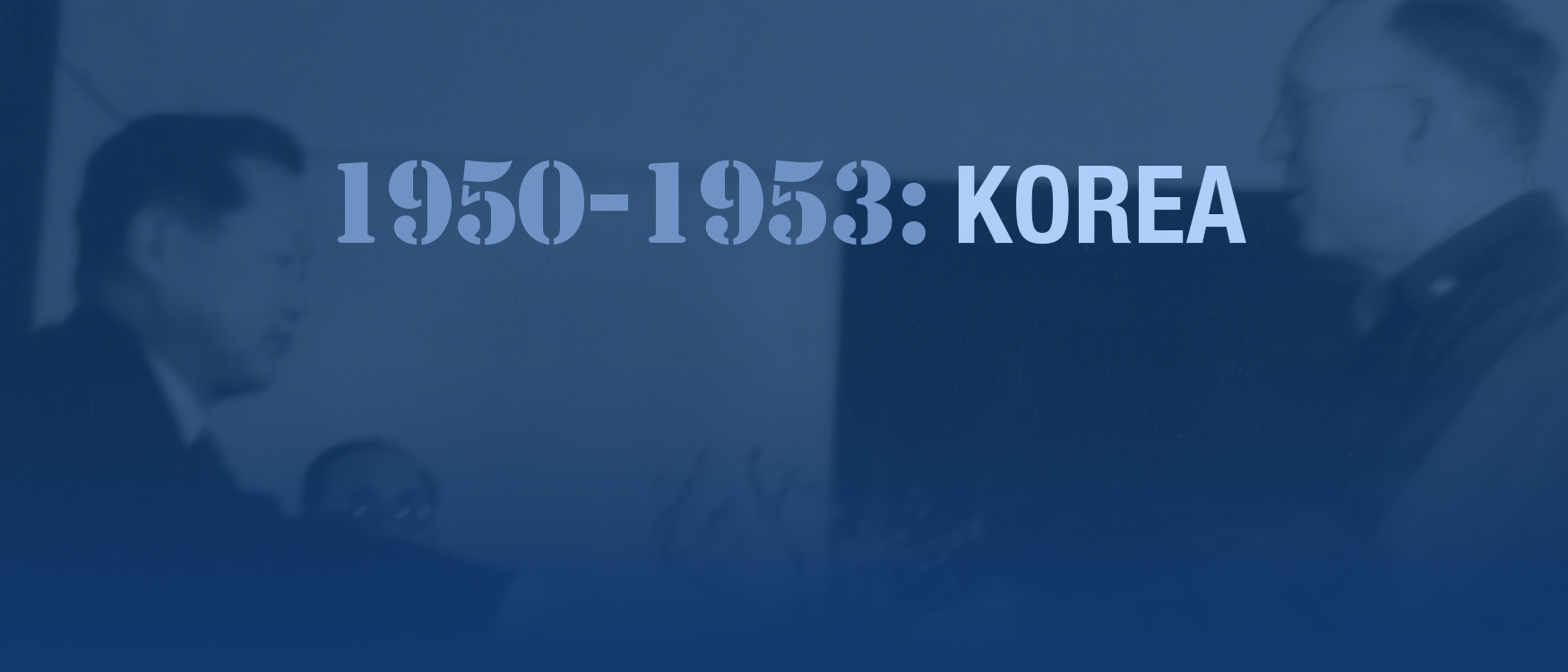
“It surely is a revelation to see the far-reaching effects of Christian Science when I find I can be visited by a Christian Science chaplain seven thousand miles from home in far-off Korea. Talking with this chaplain has helped me considerably.”
—“Letter home from a serviceman in Korea,” Christian Science Sentinel, December 13, 1952
Seoul, Korea: Major John L. Dier, c. 1952. Unknown photographer. Church Archives, Box 14646, Folder 465712.
On June 25, 1950, the Korean People’s Army crossed the 38th parallel and launched a surprise attack on the Republic of Korea. Over the course of the three-year conflict, 14 Christian Scientists served as chaplains. Among them, Fred Beyer recalled a group of GIs demanding to exit their position after they were left on the front lines without support. He told them, “God knows your mission is to protect life…and He it is that will protect you!” Within half an hour, American support troops arrived.
The Korean War demonstrated an ongoing need for Christian Science chaplains, and the Christian Science Board of Directors decided to establish the chaplaincy program on a semi-permanent basis, rather than only during major conflicts.
Christian Science chaplains often made lasting impressions on both soldiers and civilians. Major John Dier was among them. This World War II veteran frequently wrote home requesting Christian Science literature, as well as prayerful and financial help for the people of Korea. His unit supported an orphanage.
Chaplain (Major) John L. Dier, USAF, receives a scroll from Mayor Kim of Seoul, Korea, n.d. Unknown photographer. Church Archives, Box 14646, Folder 465712.
On August 18, 1952, Dier wrote about a young girl he had encountered. She was orphaned and fending for herself by begging from family to family. He brought her to the orphanage. Seven months later he reported that she was thriving and soon to start school. Dier received a special citation from the South Korean government for his work.
